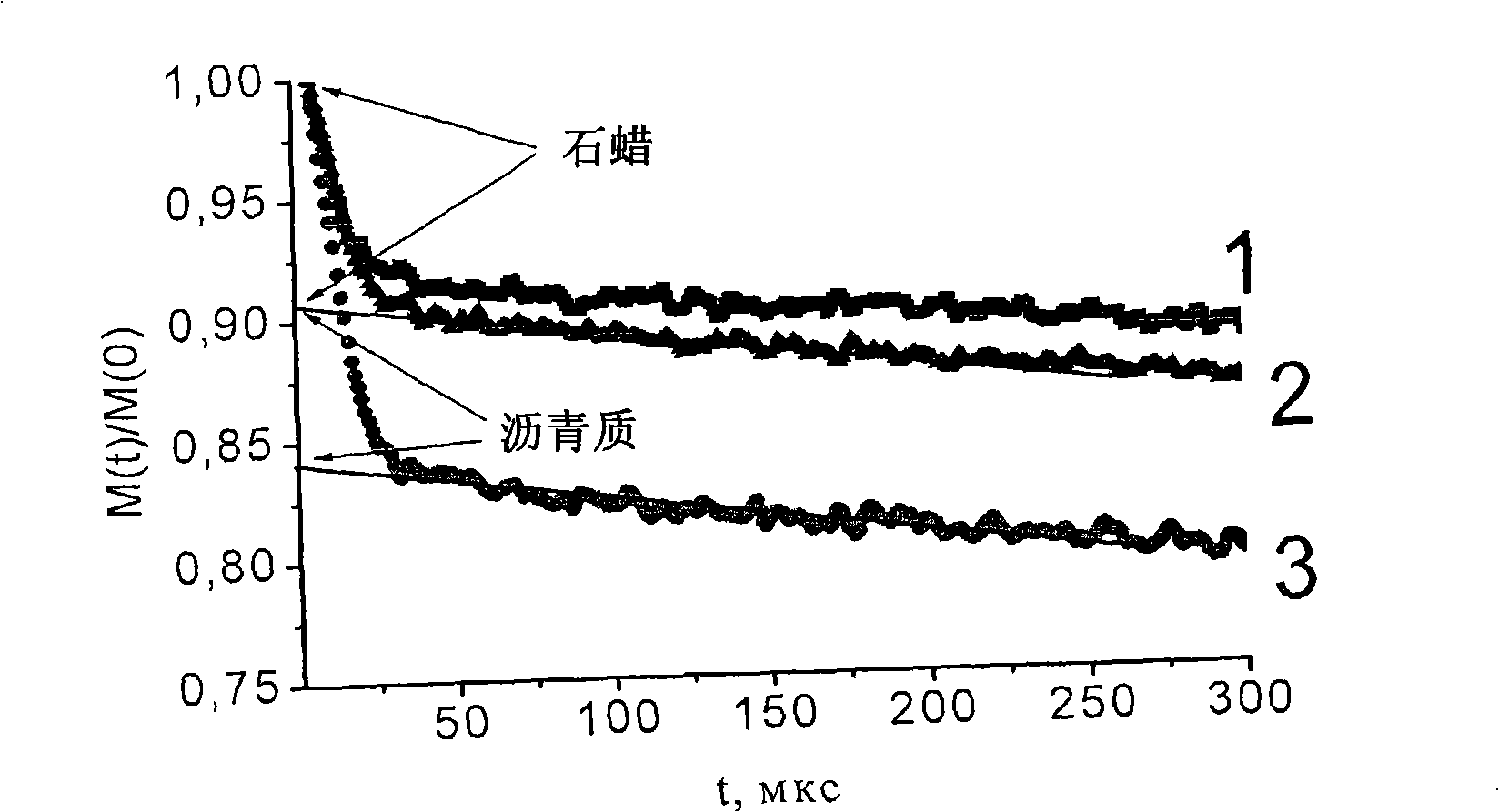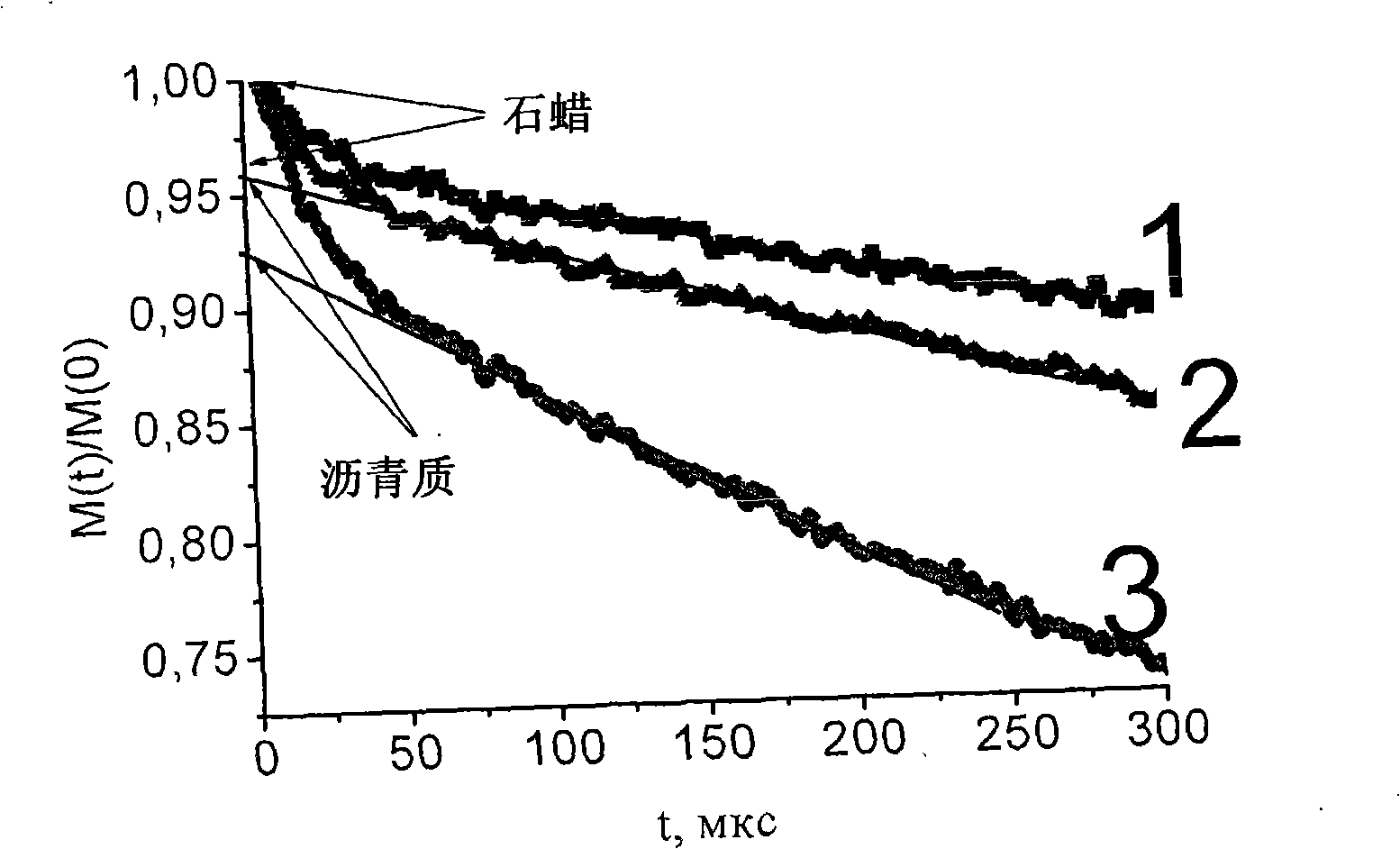Method for detecting contents of paraffin and asphaltene in oil
A technology of asphaltene and paraffin, which is applied in the fields of earthwork drilling, nuclear magnetic resonance analysis, wellbore/well components, etc. It can solve the problems of time-consuming and complicated known methods
- Summary
- Abstract
- Description
- Claims
- Application Information
AI Technical Summary
Problems solved by technology
Method used
Image
Examples
Embodiment Construction
[0014] The relaxation time of the NMR signal from the solid hydrogen-containing fraction is known to be much less than the relaxation time of the NMR signal from the liquid hydrogen-containing fraction; this allows the determination of the cumulative free induction drop of the solid and liquid components to the oil sample contribution to the curve. Thus, analysis of the free induction decline curve of an oil sample allows determination of the ratio of solid hydrogen-containing components to liquid hydrogen-containing components therein.
[0015] Virtually all suspended solid particles contained in the oil composition are presented by paraffins and asphaltenes. If the resin is separated from the oil, the resin can exist in solid form under normal conditions, however, when dissolved in the other liquid components of the oil, they become part of the liquid phase, contrary to paraffins and asphaltenes, and are The NMR signal produces a characteristic contribution.
[0016] Does ...
PUM
 Login to View More
Login to View More Abstract
Description
Claims
Application Information
 Login to View More
Login to View More - R&D
- Intellectual Property
- Life Sciences
- Materials
- Tech Scout
- Unparalleled Data Quality
- Higher Quality Content
- 60% Fewer Hallucinations
Browse by: Latest US Patents, China's latest patents, Technical Efficacy Thesaurus, Application Domain, Technology Topic, Popular Technical Reports.
© 2025 PatSnap. All rights reserved.Legal|Privacy policy|Modern Slavery Act Transparency Statement|Sitemap|About US| Contact US: help@patsnap.com


